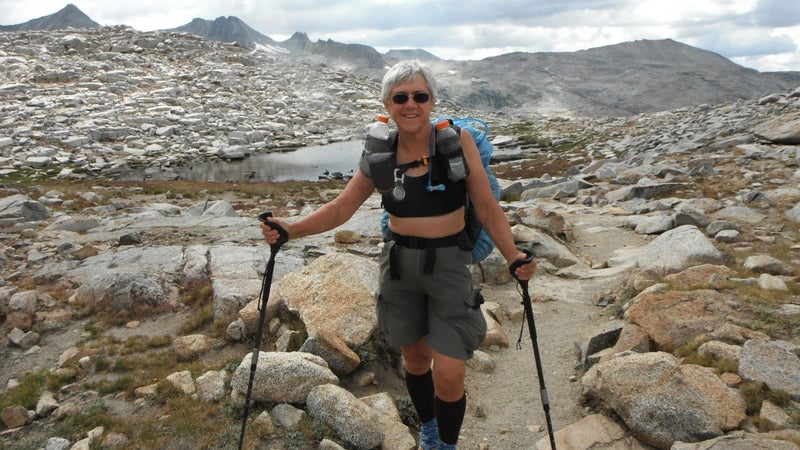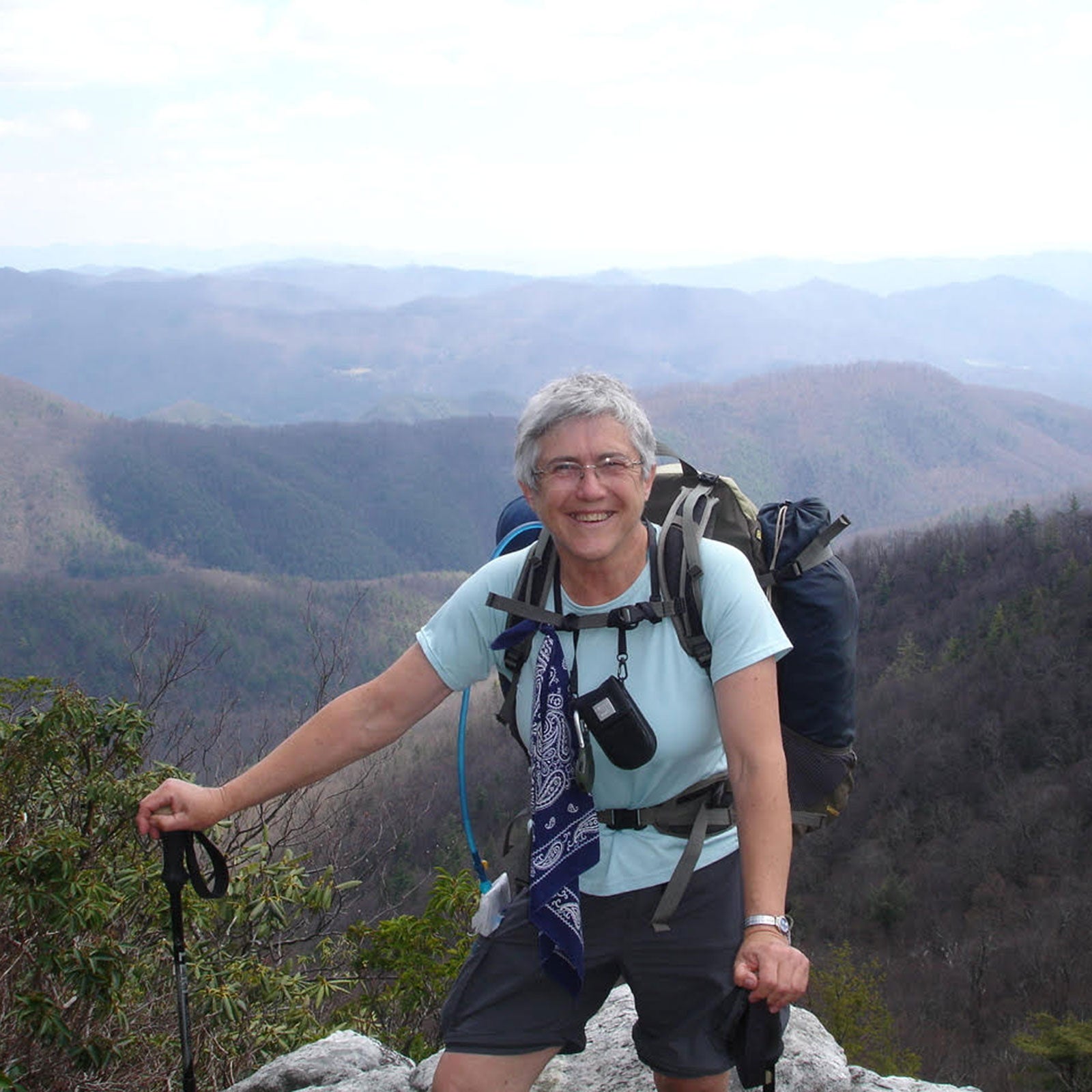On a recent��Wednesday in May, 77-year-old Mary Davison slogged through 12 wet, windy miles on the , an integrated hiking path consisting of trails and roads that��spans��6,800 miles from Delaware to California. As the weather worsened that day, Davison decided to hang it up somewhere outside Marshalltown, Iowa. By then��the wind and rain had intensified. The only shelter Davison could find for the night was a rustic picnic pavilion adjoining a little-league field. So she built a barricade out of trash barrels to block the worst of the deluge and cowboy camped in her damp sleeping bag.
“It was kind of a rotten day,” Davison told me by phone last week. “But even on a rotten day, cool things happen.”
On one section of the trail, for instance, there was a young farm manager��who let her use the restroom in his machine shed. And��there were convenience-store clerks who moved a display of soda bottles so that she could sit down and dry out while she ate her lunch. And a motel manager who agreed to wash and dry her soggy clothes. All of which, she says, is making her 512-mile hike of the ADT’s Iowa section pretty great.
By the time we talked the day after her 12-mile slog in the rain, Davison had also taken a hot shower, eaten a breakfast of eggs over easy with bacon and toast at a family restaurant, and then gone back a few hours later for a massive slice of French silk pie. She’d caught up on television news and luxuriated in cotton sheets in��a hotel room. Other than that, she’d spent the day doing next to nothing—and that was maybe the best part of all.
“I am definitely not a young person. These rest days are pretty important to me,” she said.
Already, Davison is one of only about 400 people who have earned hiking’s triple crown for completing the Appalachian, Pacific Crest, and Continental Divide Scenic Trails. And��she may well be the oldest person to do so. (The maintains a registry of triple crown holders, but reporting is voluntary and the ALDHA doesn’t keep official statistics on hiker demographics.)
Section by section, she’s now looking to complete the ADT, the nation’s first coast-to-coast trail. In order to understand what a big deal that is, consider this: we don’t even have a term for hikers who have completed all four trails, nor does anyone know if it’s been done, regardless of age.

Davison, a retired Lutheran pastor and grandmother of ten, says she grew up hiking and camping, but she��didn’t get into��long-distance backpacking��until she was 60. In 2001, she and her daughter Sarah, one of her two children,��completed the 100-mile , which encircles her native Washington’s Mount��Rainier. Davison carried an external frame backpack with at least 50 pounds of gear, including a sun shower and several books. It was an uncomfortable slog, Davison says, but also a formative one.
“I got the long-distance hiking bug and didn’t want to quit.”
She began doing section hikes on both the Appalachian and Pacific Crest Trails, yo-yoing between them and completing about 400 miles a year. When she finished both of those, she set her sights on the Continental Divide Trail. Along the way, she learned to self-arrest with an ice ax��and how best to siphon drinking water from algae-covered puddles laced with cow dung.��She learned��what to do��when you meet a bear. She picked up her trail name—Medicare Pastor. Since 2007, she’s also had two knee-replacements��and a full shoulder replacement as well. Those surgeries��forced her to really reconsider how she approached the trail.
“I can’t do super heavy weight any more,”��she says.��“I can’t go fast any more. I have to be creative about how I manage my days and my gear and my food.”��
These days, she says, she keeps her daily distances to around 15 miles. She limits her pack weight to 20 pounds or less.
To compensate, Davison says she eats in towns whenever she can. On the trail, she eats primarily energy bars and looks for ways to get daily food drops or slack pack. For that reason, the ADT, which still relies heavily on bike paths and roads, is particularly convenient.
So, too, is being a self-described “old-lady hiker.”
“I tend to stand out like a sore thumb in most places. You don’t tend to see other little old ladies walking around in the rain with a backpack.”
In Iowa, farmers let one another know when she’s heading their way and invite her to tent in their fields. Hitched rides into town are easy to come by. Well-wishers��have offered to deliver food to her along the way or pay for an extra night in a motel.
“The charm of the ADT to me is the people that you meet. On long scenic trails, you meet hikers. On this trail, you meet very few hikers��but you meet all the locals. In this day and age, we tend to be afraid of one another. And yet��the world is full of wonderful people. If I didn’t know that before, the ADT brings that out for me every day.”
The Iowa portion of the ADT is about 500 miles. As of mid-May, Davison is about halfway through the state. She hopes to finish this section in early June. After that��she’ll still have about 2,700 miles left to finish the entire trail. She doesn’t know how long that will take, or whether she’ll even be able to finish it. But that doesn’t really matter, Davison says.
“I hike because I love it. And so long as I can get in and out of a tent and put one foot in front of the other, I know I can still do it. And I’ll keep doing it until my body falls apart,” she says. “I could drop dead tomorrow, but in the meantime, my quality of life on the trail is my greatest blessing.”


